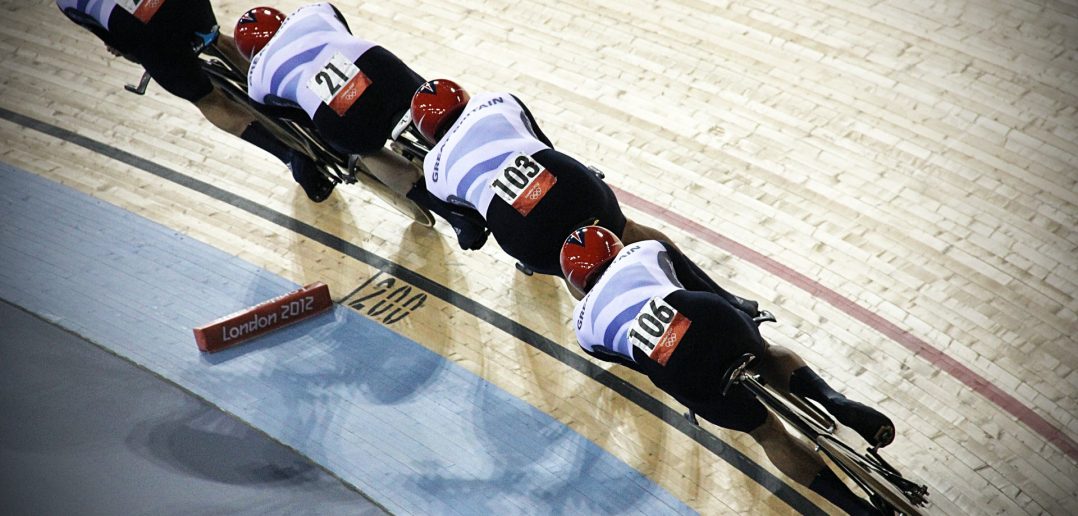As a huge road cycling fan, one of my favorite Olympic events is track cycling. With its speed and intensity, it is such a captivating set of events. While some events are sprint-focused and others are more endurance-focused, they all require powerful physical abilities, great bike-handling skills, cunning tactical expertise and deep insights into aerodynamics. In fact, aerodynamics is so important that you will need a performance engineer assigned to you if you want to compete for the gold. As an example, consider how the suits the athletes wear are developed specifically for the Olympics.
Suited for speed
When designing a speed suit for the Tokyo Olympics, you must consider the typical air pressure, temperature, altitude of the track and humidity to best understand the exact air resistance the riders will face at the event. Then teams design the suits with different fabrics and seams to best split the air given the conditions of the Olympic track.
What really amazes me is that they make different suits for different events. The Danish 4000m team pursuit uses a different suit than the Madison team, simply due to the speed difference. The Madison events have an average speed of 58-59 km/h, while the team pursuit events are at 64-65 km/h. A 6-7 km/h difference in average speed causes the need for a suit where the seams are placed differently! I am amazed that such a small speed difference creates a different need.
The 4000m team pursuit is the event with the highest focus on aerodynamics, and really an event where you can see how fast technology is moving. With the Olympics being the most prestigious event on the calendar, the teams often peak here, both physically and technologically (revealing their aerodynamic secrets). This is also seen in the race splits, as the world record has been broken at every Olympics since 2000. See the (fastest) world record of each Olympics since 2000 below:
| Olympics | Team | Time | Difference
(seconds) |
Avg. speed (km/h) |
|
Sydney 2000 |
Germany | 3:59.710 | - | 60.1 |
|
Athens 2004 |
Australia | 3:56.610 | 3.100 | 60.9 |
|
Beijing 2008 |
Great Britain | 3:53.295 | 3.315 |
61.7 |
|
London 2012 |
Great Britain | 3:51.659 | 1.636 |
62.2 |
|
Rio 2016 |
Great Britain | 3:50.265 | 1.394 |
62.5 |
|
Tokyo 2021 |
Italy | 3.42.032 | 8.233 |
64.9 |
Records fall to innovation
When you see how clearly the world record is broken at each Olympics, there must be a lot of innovation happening. Especially the difference between the Rio and Tokyo Olympics – of more than eight seconds – is incredible. It corresponds to a 3.6% drop! The amount of innovation through the last few years is huge, often at the limit of the extensive rule set. Note, for example, the medical tape just above the socks on the legs of the Danish riders:
Another OLYMPIC RECORD!
This time it's Denmark who set a blistering time of 3:45.014 😮#Tokyo2020 | #Olympics | #CyclingTrack pic.twitter.com/q6bYlBlcBC
— UCI Track Cycling (@UCI_Track) August 2, 2021
This is an example of how the ruleset is pushed to the limit, as they were only allowed to use the tape in the first of three races. It was deemed that the tape gave too much of an illegal aerodynamic advantage. Although the tape was ultimately not allowed, I just really love this approach to innovation. In a world of extremely expensive carbon equipment designed and tested in wind tunnels, it requires a bit of out-of-the-box thinking to use tape to give you an aerodynamic advantage. To put it into perspective: The British bike is priced at £15,500 for just the frame, probably costing above £25,000 for a full setup with wheels and handlebars. And that is a track bike – a bike without brakes and gears!
New ideas from an unlikely source
Arguably the strongest force in the increased innovation since the last Olympiad is coming not from a country, but from a private team: Team Huub Wattbike. An independent British UCI track team of riders without much sponsorship or national support took on the competition through their engineering skills and whatever their credit cards would allow. They optimized their gear and tactics, really pushing the status quo. For example, they popularized intentionally dropping one rider during the event, finishing only with the required three riders as opposed to the normal approach of finishing with all four together. As they were not representing a country, they could not compete at either the Olympics or the world championships; although they jokingly represented the country of Derbados (they were based in Derby). They did win a lot, including world game medals and world cup events:
Hey @HuubWattbike ! Congratulations on your win yesterday 🥇 but which nation are you from? 😃#TissotUCITrackWC pic.twitter.com/AnfWQdkM69
— UCI Track Cycling (@UCI_Track) December 15, 2018
As the national teams realized the value of the innovation of Team Huub Wattbike, the world record quickly came even more under pressure, which explains a large part of the eight-second drop. Maybe it isn’t a surprise that one of Team Huub Wattbikes driving members, Dan Bigham, is helping the tape-wearing Danish team. It might not be a surprise, either, that he used to work for the Mercedes Petronas Formula One team.
Read about how SAS has helped the Canadian Olympic committee with preparing its athletes, which includes this video on road-cycling analytics.


